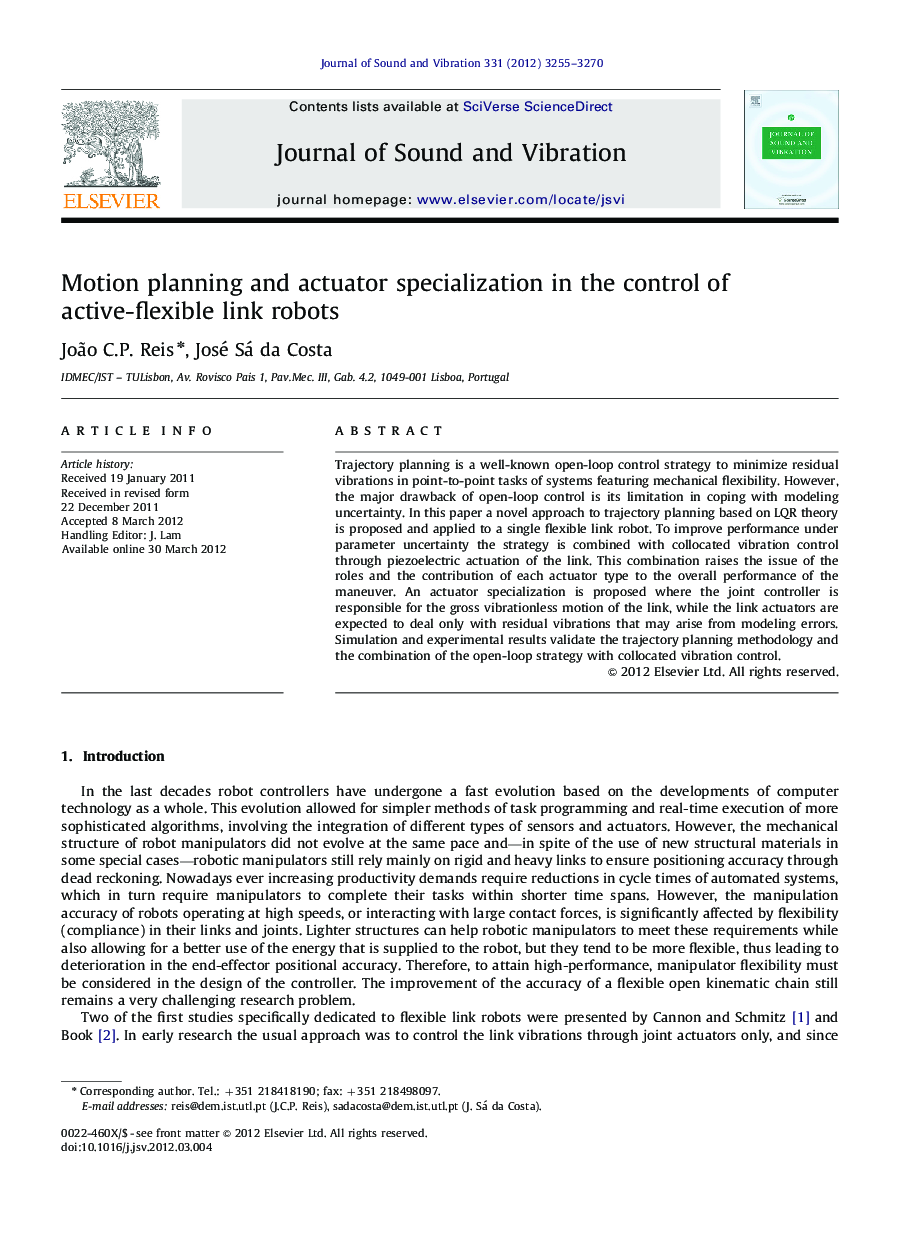| Article ID | Journal | Published Year | Pages | File Type |
|---|---|---|---|---|
| 288099 | Journal of Sound and Vibration | 2012 | 16 Pages |
Trajectory planning is a well-known open-loop control strategy to minimize residual vibrations in point-to-point tasks of systems featuring mechanical flexibility. However, the major drawback of open-loop control is its limitation in coping with modeling uncertainty. In this paper a novel approach to trajectory planning based on LQR theory is proposed and applied to a single flexible link robot. To improve performance under parameter uncertainty the strategy is combined with collocated vibration control through piezoelectric actuation of the link. This combination raises the issue of the roles and the contribution of each actuator type to the overall performance of the maneuver. An actuator specialization is proposed where the joint controller is responsible for the gross vibrationless motion of the link, while the link actuators are expected to deal only with residual vibrations that may arise from modeling errors. Simulation and experimental results validate the trajectory planning methodology and the combination of the open-loop strategy with collocated vibration control.
► LQR used as a trajectory design methodology. ► Link piezoelectric actuators targeting modelling uncertainty effects. ► LQR trajectory design has good performance if the linear model is precise enough. ► Combining it with link actuators improves performance under modelling uncertainty.
